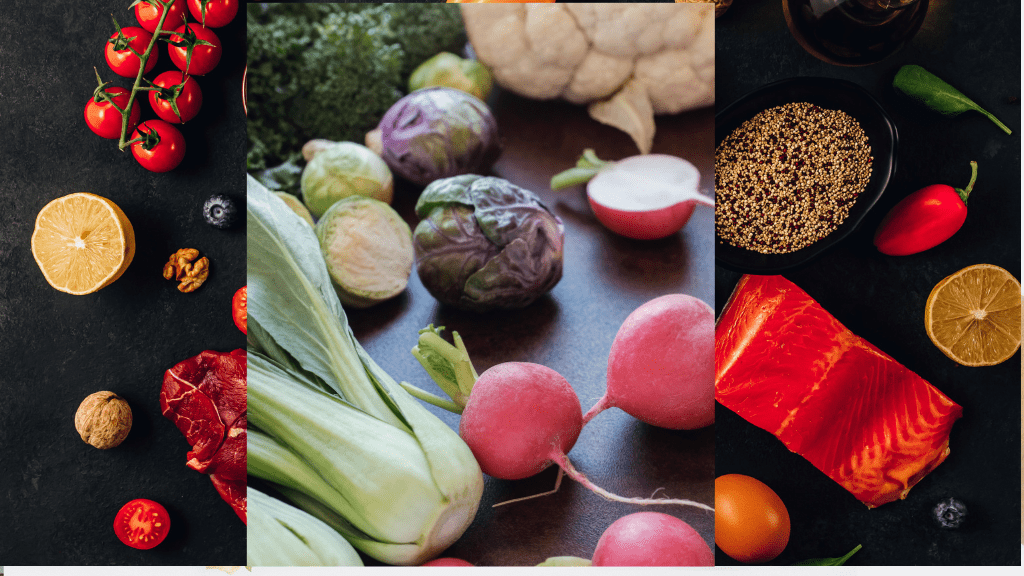In the world of nutrition, the quest for a balanced diet that promotes health and well-being often leads us to explore the fascinating realm of high fiber vegetables. With the rise of low-carb diets gaining popularity, the synergy between incorporating fiber-rich vegetables and minimizing carbohydrate intake has become a hot topic among health-conscious individuals. Imagine indulging in a vibrant plate bursting with colors and flavors while knowing that each bite not only satisfies your taste buds but also nourishes your body with essential nutrients. This article delves into the intriguing world of high fiber vegetables and their potential to be a cornerstone in a low-carb lifestyle, offering insights into how these nutritional powerhouses can revolutionize your approach to eating for optimal health and vitality.
Benefits of Low Carb Eating:
Low carb eating offers a myriad of benefits, particularly when it comes to incorporating high fiber vegetables into your diet. These nutrient-dense foods not only help in weight management but also promote digestive health by aiding in better digestion and preventing constipation. By focusing on low-carb options like leafy greens, broccoli, and bell peppers, individuals can experience improved blood sugar control and reduced risk of chronic diseases such as diabetes.
Moreover, incorporating high fiber vegetables into a low carb diet can lead to increased satiety levels and reduced cravings for unhealthy processed foods. This can be especially beneficial for those looking to maintain a healthy weight or lose excess pounds. Additionally, the diverse range of antioxidants and vitamins present in these vegetables contribute to overall well-being by boosting the immune system and protecting against inflammation-related conditions. Embracing a low carb lifestyle rich in high fiber vegetables is not just a dietary choice but a gateway to long-term health benefits that go beyond weight management.
Top High-Fiber, Low-Carb Vegetables to Include:
When it comes to maintaining a healthy low-carb diet, incorporating high-fiber vegetables is essential for overall well-being. Vegetables such as broccoli, Brussels sprouts, and cauliflower are not only low in carbs but also packed with fiber that supports digestive health. These versatile veggies can be roasted, steamed, or enjoyed raw in salads to add a crunchy texture to your meals while keeping carbohydrate intake in check.
Another great addition to your low-carb, high-fiber vegetable list is spinach. This leafy green powerhouse is rich in fiber and low in carbs, making it an excellent choice for salads or as a side dish. By including these nutrient-dense vegetables into your daily meals, you can boost your fiber intake while staying on track with your low-carb goals.
How to Incorporate These Vegetables into Meals:
When it comes to incorporating high-fiber vegetables into meals, creativity is key. For example, cauliflower can be transformed into a delicious rice alternative by simply grating or pulsing it in a food processor. This low-calorie and high-fiber swap adds nutrition and texture to dishes like stir-fries or burrito bowls. Another versatile vegetable is zucchini, which can be spiralized into noodles for a nutrient-dense pasta alternative. Toss these zoodles with your favorite sauce and protein for a satisfying meal that is both healthy and delicious.
For those looking to add more greens to their diet, kale is an excellent choice. Try massaging kale leaves with olive oil and lemon juice to soften their texture before adding them to salads or smoothies. Additionally, bell peppers are not only vibrant in color but also rich in fiber. Stuff them with quinoa and black beans for a hearty and nutritious meal that can easily be prepped ahead of time. By thinking outside the box and experimenting with different cooking methods, these high-fiber vegetables can elevate your meals while promoting overall health and wellness.
Recipes Featuring High-Fiber, Low-Carb Vegetables:
One delicious way to incorporate high-fiber, low-carb vegetables into your meals is by making a colorful and nutrient-packed stir-fry. Combine crunchy bell peppers, crisp snow peas, and fibrous broccoli florets with lean protein like chicken or tofu. The added fiber from the veggies will not only keep you feeling full longer but also support digestive health.
Another innovative way to enjoy high-fiber, low-carb vegetables is by creating a veggie-packed cauliflower rice bowl. Grate fresh cauliflower into rice-like grains and sauté with fiber-rich spinach, zucchini noodles, and diced tomatoes. Season with herbs and spices for a burst of flavor without the added carbs. This low-calorie dish is not only satisfying but also provides essential nutrients to fuel your body throughout the day.
Potential Side Effects and Precautions:
High fiber vegetables are renowned for their numerous health benefits, but it is essential to be aware of potential side effects and precautions when consuming them. One common side effect of high-fiber vegetables is bloating and gas, especially for individuals with sensitive digestive systems. To mitigate this issue, gradually increase your intake of high fiber vegetables to allow your body to adjust.
Additionally, some individuals may experience discomfort or cramping due to the increased fiber content in their diet. To avoid this, ensure you drink plenty of water throughout the day as fiber absorbs water and can lead to dehydration if not properly hydrated. It's crucial to listen to your body and make adjustments as needed when incorporating high fiber vegetables into your diet to prevent any adverse effects while still reaping the many health benefits they offer.
In conclusion, incorporating high fiber vegetables into a low-carb diet can offer numerous health benefits, including improved digestion, weight management, and reduced risk of chronic diseases. These nutrient-dense foods provide essential vitamins, minerals, and antioxidants while helping to keep blood sugar levels stable. By prioritizing vegetables such as broccoli, kale, spinach, and Brussels sprouts, individuals can enhance their overall well-being and support long-term health goals. It is important to remember that a balanced approach to nutrition is key, and consulting with a healthcare provider or registered dietitian is recommended when making significant dietary changes. Start reaping the benefits of high fiber vegetables in your low-carb diet today for a healthier tomorrow.




